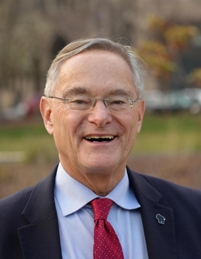A Brief History of Wisconsin US Representatives Serving Nonconsecutive Terms
Kenosha’s Peter Barca hopes to join the more than one in 10 members of the U.S. House from Wisconsin who had gaps in service; Barca’s, however, would be a state record

Barca served one term in the U.S. House of Representatives after a special election victory during the 103rd Congress (1993-1995) that was sandwiched in between representing the Kenosha-based 64th Assembly District (1985-1993, 2009-2019).
After the election of Tony Evers in 2018, Barca served five-plus years as the governor’s State Department of Revenue secretary until his resignation earlier this month.
Barca narrowly lost his bid for a second term from congress during the Republican Revolution of 1994 when he came up 0.7 points short in a rematch against his 1993 opponent, Mark Neumann. [Barca had defeated Neumann by 0.6 points 18 months prior].
If Barca wins the Democratic nomination in mid-August as expected, he will face three-term incumbent Bryan Steil who should be favored in the +3 GOP district. Steil won his seat by 8.9 points in 2022 and the 1st CD is one of only two remotely competitive congressional districts in the state.
A Barca victory in November would not only be a mild upset but it would also set the mark in Wisconsin for the largest gap in U.S. House service at 30 years.
Of the nearly 190 men and women to serve as U.S. Representatives from Wisconsin since the late 1840s, a total of 21 have done so with non-consecutive terms – although none during the last 60 years.
Nearly half of these representatives – 10 – just had a one term gap in service, most due to losing their seat:
- Republican Lucien Caswell (1875-1883, 1885-1891): Lost the 1st CD nomination to former State Senator Charles Williams in 1882
- Republican Isaak Van Schaick (1885-1887, 1889-1891): Did not run for the 4th CD nomination in 1886
- Republican Henry Cooper (1893-1919, 1921-1931): Lost the 1st CD nomination in 1918 to Kenosha attorney and former municipal judge Clifford Randall and placed second in the general election as an independent
- Republican John Nelson (1906-1919, 1921-1933): Lost the 3rd CD nomination in 1918 to Darlington newspaper editor and owner James G. Monahan
- Republican-turned-Progressive George Schneider (1923-1933, 1935-1939): Lost the 8th CD general election in 1932 to West De Pere Democratic school district director James Hughes
- Republican-turned-Progressive Thomas Amlie (1931-1933, 1935-1939): Lost the 1st CD GOP nomination to Edgerton city attorney George W. Blanchard
- Progressive Harry Sauthoff (1935-1939, 1941-1945): Lost the 2nd CD general election in 1938 to Horicon Republican insurance agent Charles Hawks
- Democrat Andrew Biemiller (1945-1947, 1949-1951): Lost the 5th CD general election in 1946 to Milwaukee Republican attorney Charles Kersten
- Republican Charles Kersten (1947-1949, 1951-1955): Lost the 5th CD general election in 1948 to former Democratic U.S. Rep. Andrew Biemiller
- Republican Henry Schadeberg (1961-1965, 1967-1971): Lost the 3rd CD general election in 1964 to Democratic State Senator Lynn Stalbaum
Two Wisconsinites had more than two nonconsecutive stints in the U.S. House – fighting over Milwaukee’s 5th CD for the better part of two decades during the early 20th Century.
Republican William Stafford (1903-1911, 1913-1919, 1921-1923, 1929-1933) had gaps of two, two, and six years, losing sporadically to Socialist Milwaukee Mayor Victor Berger (1911-1913, 1919, 1923-1929) who had periods of six and four years out of office.
But the Wisconsin U.S. Representative with the longest span between terms was Democrat William Lynde (1848-1849, 1875-1879) at 26 years.
Lynde was one of two members comprising Wisconsin’s inaugural U.S. House delegation after statehood in May 1848. However, Lynde lost his 1st CD seat that autumn to former Territorial Legislator and Free Soiler Charles Durkee.
Over the next few decades, Lynde won election to Milwaukee Mayor, the Wisconsin Assembly, and the Wisconsin Senate.
In 1874, Lynde was nominated by the Democrats to the open 4th CD seat and returned to the U.S. House after an 11.6-point win against Milwaukee Mayor Harrison Ludington.
The remaining eight Wisconsinites to serve nonconsecutive terms are:
- Republican Cadwallader Washburn (1855-1861, 1867-1871) at six years: Did not run for the 2nd CD nomination in 1860
- Republican Philetus Sawyer (1865-1875, 1881-1893) at six years: Did not run for the 6th CD nomination in 1874
- Republican James Davidson (1897-1913, 1917-1918) at four years: Lost the 6th CD general election in 1912 to Fond du Lac Democratic attorney Michael Reilly
- Democrat Michael Reilly (1913-1917, 1930-1939) at 13 years: Lost the 6th CD general election in 1916 to former U.S. Rep. James Davidson
- Republican John Schafer (1923-1933, 1939-1941) at six years: Lost the 4th CD general election in 1932 to Milwaukee Democratic attorney Raymond Cannon
- Republican-turned-Progressive-turned-Republican Merlin Hull (1929-1931, 1935-1953) at four years: Lost the 7th CD nomination in 1930 to former State Assemblyman Gardner Withrow and placed a distant second in the general election as an independent
- Progressive-turned-Republican Gardner Withrow (1931-1939, 1949-1961) at 10 years: Lost the 3rd CD general election in 1938 to former State Senator Harry Griswold
- Republican Glenn Davis (1947-1957, 1965-1974) at eight years: Did not run for the 2nd CD nomination in 1956 and instead narrowly lost the GOP U.S. Senate primary to three-term incumbent Alexander Wiley
Davis’ 1964 victory in the state’s 9th CD marks the last time a former Wisconsin U.S. Representative has returned to the chamber.
Follow Smart Politics on X/Twitter.

Philip Francis Thomas of MD had a 34 year gap and Rick Nolan of MN I know had a 32 year gap. Which means it’s a possibility that Peter Barca might have 3rd longest gap ever if elected.